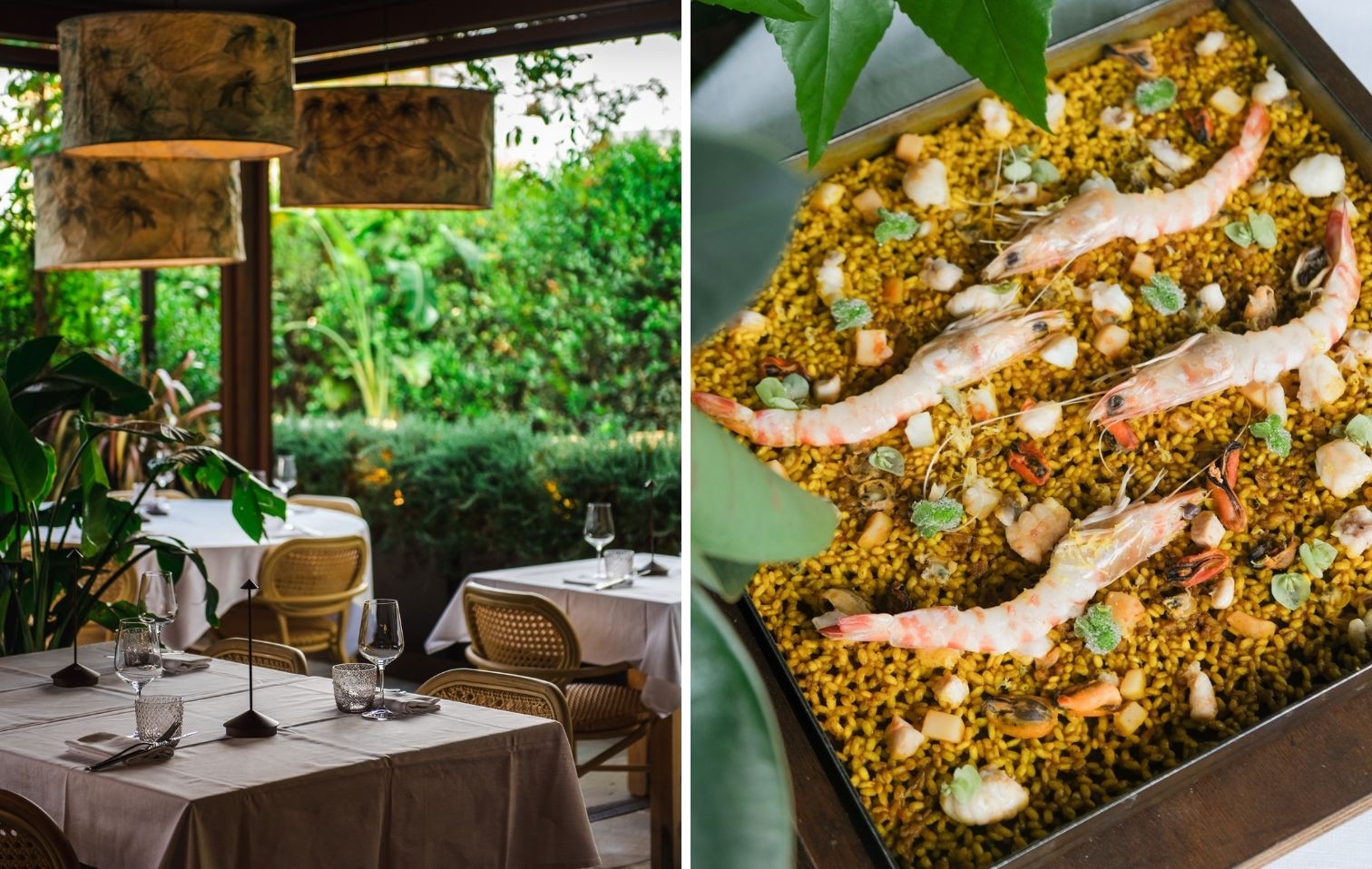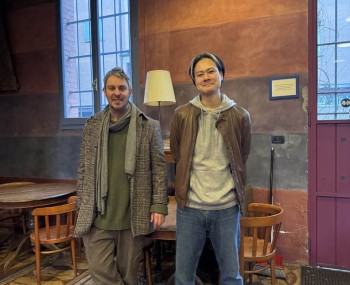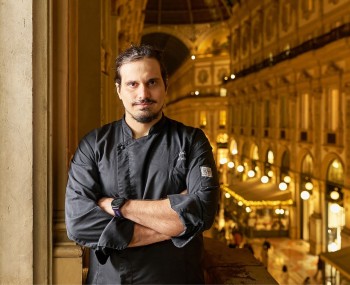A place that creatively merges Italy and Spain, from reimagined paella to mackerel with Emerald algae oil, beetroot, and Citra Leaves. On the Cervia seafront, there’s a venue making waves with paella, "challenging" the classic dishes of the Romagna riviera! Spain meets Italy at Quimérico: we unveil the menu and the chef behind it.
*Content for promotional puroposes
The Venue
Overturning the beloved yet contentious culinary tradition of the Romagna Riviera is no small feat, as it challenges decades of entrenched 'this is how it’s always been done' attitudes. However, some have managed to do so brilliantly, paving the way for change while staying within the bounds of high accessibility. Quimérico in Cervia, owned by Gianpaolo Turci, a Romagnolo entrepreneur who has long commuted between his homeland and Spain, particularly the island of Formentera, stands as a prime example of this transformation.

Among the first to establish a presence in the Balearics, he started from Bertinoro and there opened Bocasalina: "I have always liked Spanish cuisine, and the idea was to bring a high-quality yet standardized dining experience to Cervia as well, with concepts like 'para compartir,' dishes shared at the center of the table, adapting the offerings to local products." Turci accomplishes this with a significant culinary director.

"I met Pier Giorgio Parini several years ago, and together we have embarked on various unique culinary projects in both Italy and Spain. He supports me with his extensive expertise, and together we've created a great synergy in crafting something different from the norm. When we started here in Cervia, people had a fixed idea of the classic Riviera style. But those who knew me were also asking for what they had enjoyed in Formentera, like paella, for example. However, offering a pan of rice to someone from Romagna, who is used to seafood risotto, is not easy. Now, we are very satisfied and have built a strong following, especially among the younger crowd who understand and are willing to try different things."

Quimérico is a charming venue that offers a range of services: it functions as a breakfast spot, a cocktail bar for aperitifs, and a restaurant. Additionally, it houses the beautiful rooms of the bed & breakfast Lu. There are also Calupe and Simple, which are modern and well-equipped bathrooms. The common gastronomic thread in this little universe is its dedication to sustainability, a concept championed by one of the great Italian innovators, Pier Giorgio Parini, even before sustainability became a widely used term. Parini, known for his time at Povero Diavolo in Torriana, has always emphasized the importance of high-quality ingredients and foundational cooking principles, where vegetables play a central role, reflecting his approach to cuisine that doesn't rely on exclusive elements but rather on exceptional quality across concepts and ingredients.

"I first met Gianpaolo through mutual friends when I started helping out at Benso in Forlì, and we got along really well. Four years ago, he decided to open up in Cervia, starting with the idea of creating a kind of mixed cuisine, blending Italian and Spanish influences with some Spanish dishes Italianized and Italian dishes with a Spanish twist. At the core is the fact that we have a lot of work and buy very high-quality, super local ingredients, which is quite uncommon for a beachside bath and a bustling restaurant on the promenade. We cover a lot of ground, but we have a great team of very talented guys. There's a head chef, and then there's me—I'm like the tree you stop under if you need to catch your breath and refuel, that's my role," he laughs.

Parini emphasizes that Quimérico should not be seen as solely his restaurant because, as Gianpaolo immediately pointed out, "if it were viewed as your restaurant, it could pose a problem. Whether I am there or not, everything must run smoothly, and the 100 covers per service that we handle on weekends must proceed in the same way, always in line with our shared vision. I cannot leave the fate of the business in the hands of someone who might wake up one morning and jeopardize everything without a justifiable reason." This statement underscores the collaborative ethos at Quimérico, highlighting the importance of teamwork and shared responsibility in maintaining the restaurant's success.

Parini further elaborates on the ethos at Quimérico, likening it to discovering the obvious, or "discovering hot water," as he puts it. He criticizes the common desire among chefs to have their signature on the menu, labeling it as an outdated way to think about running a restaurant today. He recounts hearing about restaurants that manage only a few tables and customers, deeming such an approach unsustainable because it can only be executed under very specific conditions, such as having the restaurant bear one's name and being very small scale. With a team of 60-70 employees at full capacity, Parini emphasizes the necessity of having a motivated workforce that is well-treated and stimulated to always give their best. He points out the practical needs of the business, such as paying salaries and maintaining the structure, underlining his satisfaction with being able to delegate and not always be present, yet always being available when needed, whether to develop menus, dishes, or to support the team.

The Products
The cuisine at Quimérico might not have the same complexity as what Pier Giorgio was known for at Torriana, but it certainly maintains a medium-high level: "It's definitely different from everything else around here; it has guts and substance. We use top-notch products and assemble them correctly, aiming to pique people's curiosity." With a bit of imagination and vision—and fortunately, Gianpaolo has plenty—there's room to do very well and maintain a healthy business. To achieve optimal results, organization, precision, and products that ensure consistent quality are essential. This is why at Quimérico, there's a significant use of watercress and microgreens from Koppert Cress to maintain high standards in their offerings.
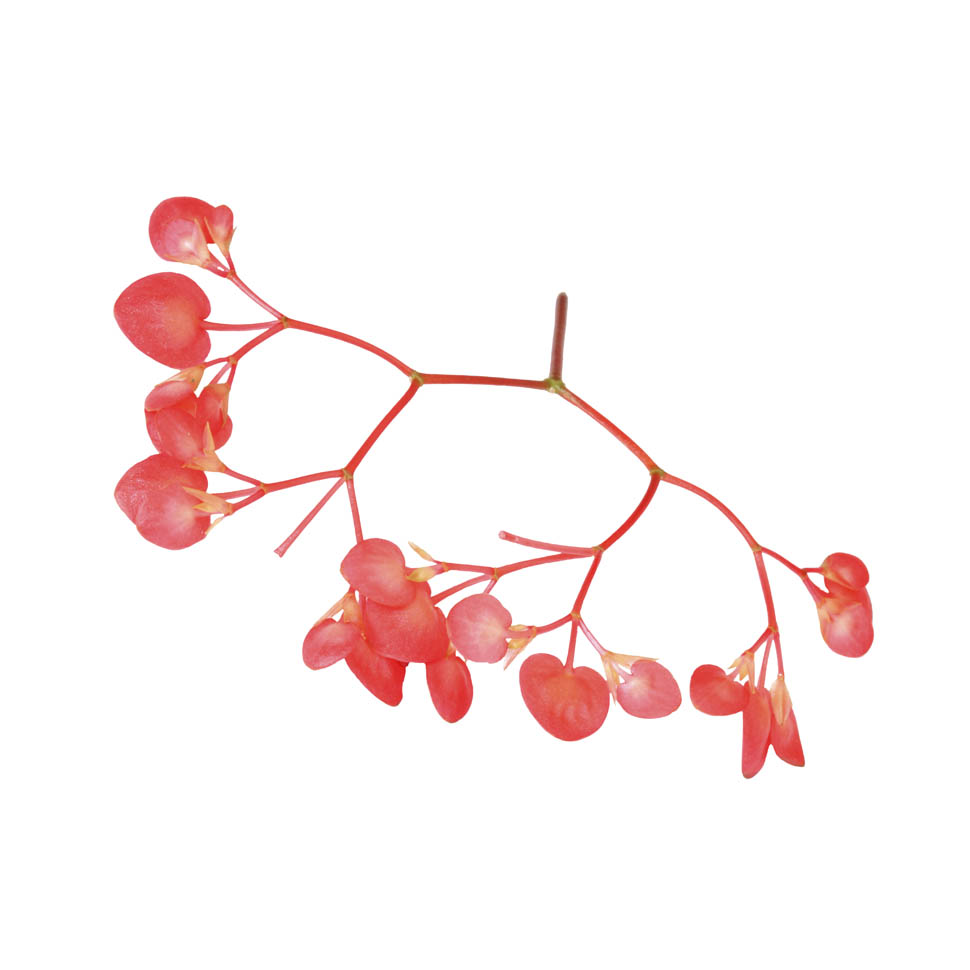
"Today, they are essential," reflects Parini on the use of high-quality ingredients at Quimérico. "If you had asked me ten years ago, I would have said mixing them is like combining oil and water. Now, I couldn't maintain the same level without a precise standard and coding system. We need to ensure that the dishes are consistently the same, both in appearance and taste." He notes that while the visual appeal of the dishes is significant, it's their distinctive taste that truly matters. Parini emphasizes the need to use these ingredients thoughtfully and not just for aesthetic appeal, as many tend to do. He also points out the financial implications: "Many don't consider it, but the costs add up: we use 25 quintals of cuttlefish in a season. We are the only place by the sea that makes a seafood salad with only fresh cuttlefish. It took us some time, but now our customers really notice the difference."
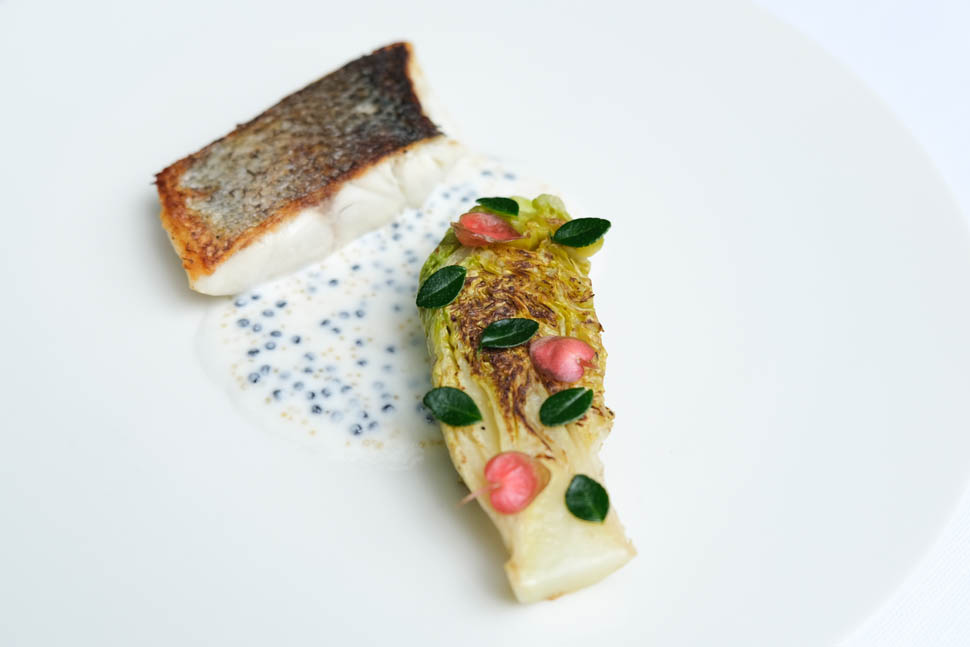
Se ci mettiamo due foglie di nasturzio per dargli il piccante e moltiplichiamo, alla fine il valore che esce è importante. Stessa cosa quando usiamo i crescioni che integriamo costantemente nel nostro meccanismo: non mi potrei permettere di andare a raccoglierli, non c’è il tempo e non sarebbe sostenibile. Abbiamo comunque persone che ci danno una mano e l’80 % delle verdure che usiamo sono coltivate lì vicino da una ragazza che ha un orto biologico.”
I piatti
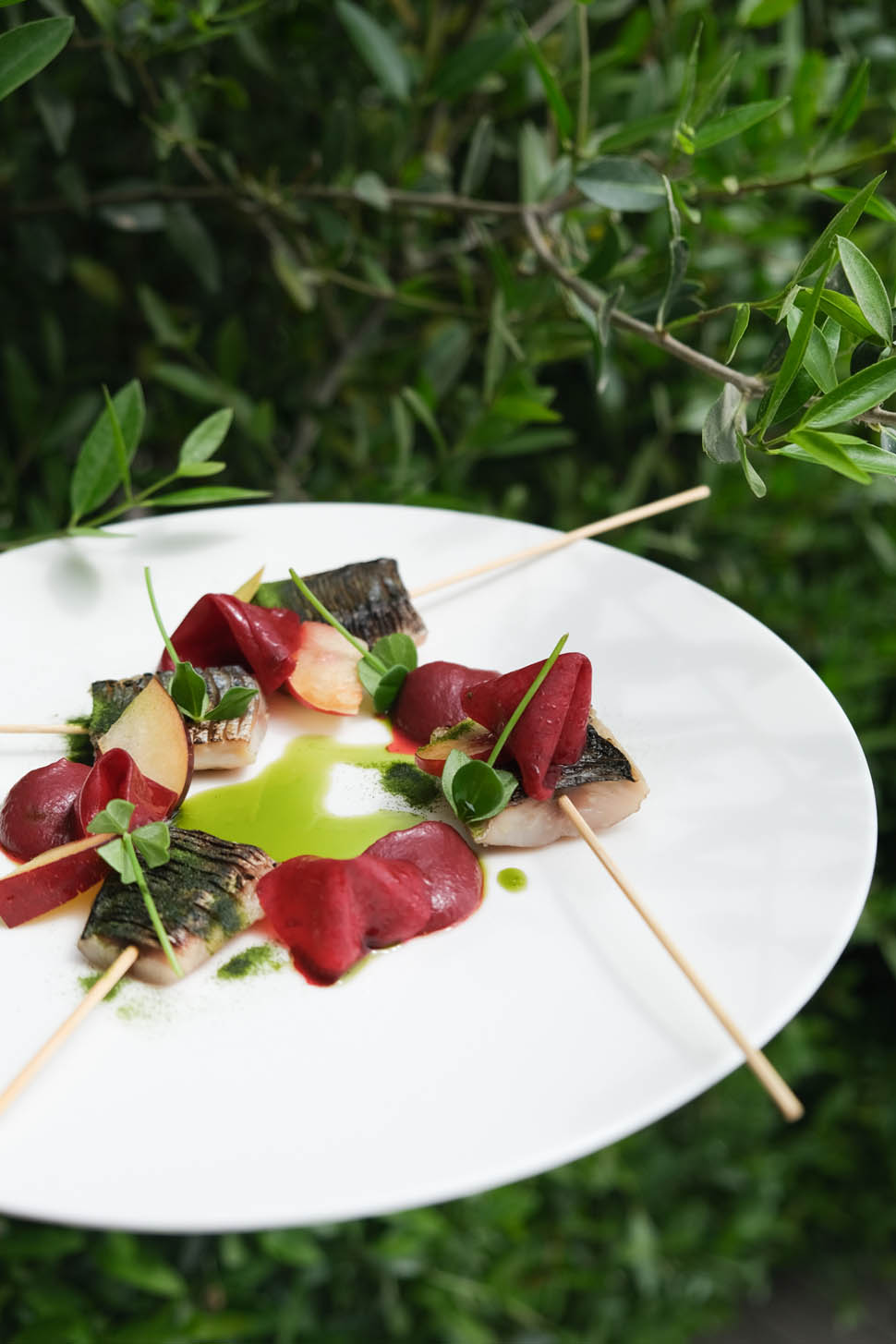

Among the most original dishes is the marinated mackerel with Emerald algae oil, beetroot, and Citra Leaves, a stunning blue fish known for its rich flavor and health benefits. Also noteworthy is their unique take on paella, here called "riso al quadrato," which uses Floregano and Blinq Blossom for a distinctive touch. "It took us an entire winter to decide whether to make it or not. Then we decided yes, and that we should make it even better than what is eaten in Spain: we created our own version of paella with our fish, had special black iron pans made to cook it in a specific way. Born in Cervia, this summer we brought it to Formentera, Spain."



At Quimérico, they have systematically and determinedly raised the average standard of dining that is often taken for granted along the waterfronts of famous locations, with a level of service that rivals much more renowned establishments, supported by the cohesion of a highly skilled team. Pier Giorgio Parini summarizes their philosophy: "We do simple things, especially on the beach, but they are flavorful and substantial, creating value that comes from careful thought. When someone tries our cuttlefish and then experiences it elsewhere as bland and rubbery, they truly appreciate the difference. Our approach is more than just cooking; it's about creating culture. We may not teach, but we certainly make a statement."

The Recipes
Marinated Mackerel with Emerald Algae Oil, Beetroot, and Citra Leaves
Ingredients for four people:
- 4 fresh mackerels, approximately 250 grams each
- 20 grams of Emerald Algae Powder
- 30 grams of grapeseed oil
- 1 red beet
- Garlic
- Salt
- Sugar
- Smoked vinegar
- A few thin slices of raw red beet
- 1 black plum
- Coarse salt
- Citra Leaves
Procedure
Prepare the Mackerel: Clean and fillet the mackerel, remove the bones, and lay it on a tray. Generously cover the fillets with coarse salt and let them sit for about 10 minutes to cure. Afterward, rinse the salt off, pat the fillets dry, and refrigerate them.
Cook the Beetroot: Peel and thinly slice the beetroot, then cook the slices until tender. Blend the cooked beetroot while still warm with grapeseed oil, a bit of water, and season with salt and sugar. Add smoked vinegar for a touch of acidity, then cool the mixture down and store it in the fridge.
Prepare the Emerald Algae Oil: Mix grapeseed oil with Emerald algae powder and warm it to 60 degrees Celsius in a blender like a Thermomix. Blend for about 10 minutes to allow the flavors to infuse.
Assemble the Dish: Remove the mackerel from the fridge, carefully remove the outer layer of skin, and score the flesh. Use a torch to lightly char the surface. Slice the mackerel into portions.
Final Plating: Dress the raw beet slices and plum segments with the algae oil, smoked vinegar, and salt. Arrange the mackerel on the plate, place the beet sauce beside it, and add the dressed beet and plum slices around. Finish with a generous drizzle of the algae oil, and garnish with Citra Leaves and a sprinkle of algae powder.
Il riso al quadrato
Ingredients to serve four people
- 400 g of Carnaroli rice
- 150 g of cuttlefish ragù
- 100 g of cleaned and cubed monkfish
- Eight local prawns (mazzancolle nostrane)
- 150 g of cleaned grey mullet (cefalo)
- 100 g of cleaned clams (vongole)
- 500 g of cleaned mussels (cozze)
- One package of Floregano
- One package of Blinq Blossom
- 1 liter of fish broth flavored with bell pepper and saffron
- Extra virgin olive oil
Procedure
For this dish, begin by sautéing the cuttlefish ragù with Carnaroli rice in a square pan, allowing the rice to lightly toast and absorb the flavors of the ragù. Gradually add the seasoned fish broth to the pan, ensuring the rice cooks evenly. Halfway through the cooking process, incorporate the cubed monkfish, diced local prawns, cleaned clams, mussels, and small pieces of mullet, allowing them to cook with the rice and infuse their flavors.
As the dish approaches the end of cooking, add whole raw prawns for extra texture and richness. Drizzle with extra virgin olive oil and return to the heat for a brief period to crisp the bottom of the rice, enhancing its texture. Finally, garnish the completed dish with Floregano and Blinq Blossom flowers, adding aromatic and visual appeal. This preparation method ensures a rich blend of seafood flavors complemented by aromatic herbs, presented in a visually appealing way with a satisfying crispy texture.
